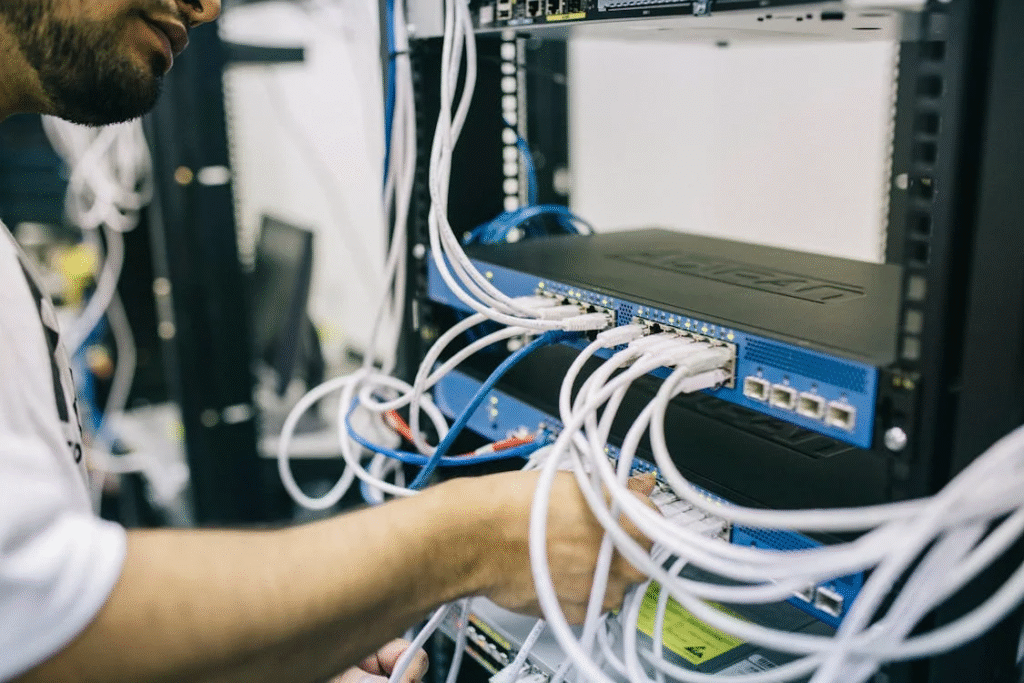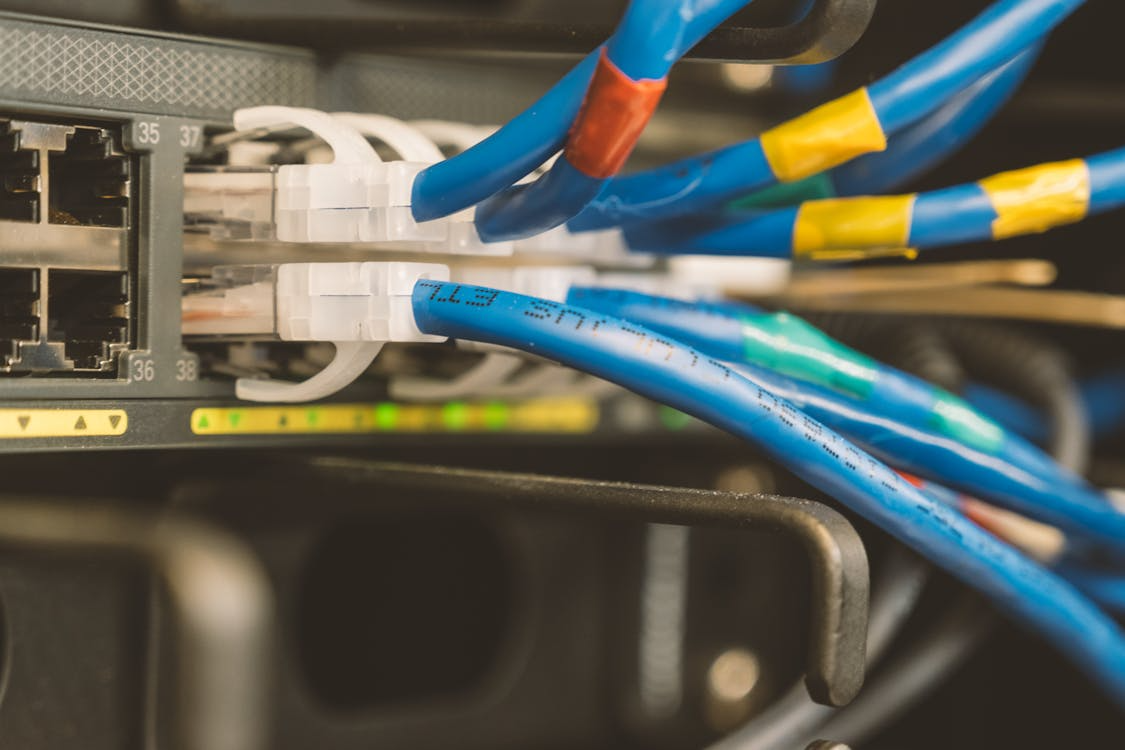
In today’s hyper-connected business landscape, seamless communication and data exchange are non-negotiable. Behind every strong and stable network lies a critical component: data cabling. Whether you’re a business owner expanding your office or an IT professional designing a robust infrastructure, understanding the fundamentals of structured cabling is essential.
This guide offers a complete educational overview of data cabling systems, helping you make informed decisions that support your company’s performance, security, and growth.
What is Data Cabling and Why It Matters
Data cabling refers to the system of physical wires that transmit digital signals between computers, servers, and other networked devices. It’s the unseen foundation of modern business networks, ensuring communication flows efficiently across an organization.
A well-designed cabling system does more than just connect devices—it ensures reliability, minimizes downtime, and supports future scalability. As more businesses rely on cloud-based tools, video conferencing, and remote access, structured data cabling is increasingly crucial for operational stability and high-speed performance.
Applications of data cabling span offices, warehouses, retail spaces, and large-scale data centers. From running VoIP systems to supporting high-resolution CCTV and secure internal communications, nearly every digital activity depends on a dependable cabling infrastructure.
Types of Data Cabling Systems
Business networks commonly use three major types of cabling systems: Cat5e, Cat6, and fiber optic.
Cat5e cabling supports speeds up to 1 Gbps and is cost-effective for standard office setups. It’s widely used but gradually being replaced by more advanced solutions.
Cat6 cabling offers higher performance, with data rates up to 10 Gbps over short distances. It’s ideal for high-traffic environments that demand faster transfer speeds and reduced signal interference.
Fiber optic cabling represents the future of networking. Transmitting data as light through glass or plastic fibers, it provides ultra-fast speeds, long-distance coverage, and immunity to electromagnetic interference—ideal for data-intensive industries or large buildings.
Some legacy systems still use coaxial cables, typically in older buildings or for specific uses like CCTV. However, modern installations now prioritize structured cabling for better performance and organization.
Key Components of Structured Cabling
Structured cabling is a standardized approach to network design that organizes infrastructure into subsystems for easier management. Its efficiency, scalability, and tidiness make it the go-to solution for commercial environments.
Two fundamental parts are horizontal cabling, which connects individual workstations to telecom rooms on the same floor, and vertical (backbone) cabling, which links different floors or communication rooms.
The backbone of structured cabling includes:
Patch panels, which centralize and manage connections
Switches that control data routing
Racks and cabinets to secure and organize networking hardware
Effective cable management—through labeling, color coding, and routing—is crucial for reducing downtime and ensuring efficient upgrades or repairs in the future.

The Cabling Installation Process Explained
A professional cabling installation follows a structured process, starting with a site survey. This step involves assessing building layout, user requirements, and existing infrastructure. The installer evaluates power sources, wall space, network density, and potential signal interference areas.
Next comes the design and planning phase, where the cabling layout, access points, and connection types are mapped out. This ensures optimal performance and future scalability.
The installation phase involves physically running the cables, terminating them with connectors, mounting patch panels and switches, and securing everything in proper enclosures. Technicians follow strict best practices—such as maintaining bend radius, avoiding signal interference, and grounding components—to meet performance and safety standards.
Finally, the system undergoes testing and certification, verifying that it meets industry benchmarks like TIA/EIA-568. Certified test results ensure the infrastructure supports intended bandwidths and is free from faults.
Benefits of Structured Cabling for Businesses
Structured cabling offers numerous advantages that go beyond clean aesthetics. First and foremost, it allows for seamless scalability. Whether you’re hiring more employees, expanding your facility, or adopting new technologies, structured systems support growth without a complete redesign.
In addition, it enhances network performance. Properly installed and maintained cables provide faster data transfer, reduced latency, and higher reliability—especially compared to outdated or makeshift cabling setups.
From a maintenance perspective, labeled and neatly organized cabling simplifies troubleshooting and reduces the risk of human error. This translates to lower maintenance costs and minimal operational disruptions.
Structured cabling also supports a future-ready IT environment, enabling businesses to adopt new technologies like IP-based security systems, smart building controls, and high-bandwidth applications without extensive upgrades.
Choosing the Right Cabling Solution for Your Business
Not every business has the same needs, so choosing the right solution depends on current usage, growth projections, and technical requirements.
Start by assessing your bandwidth demands, number of devices, and remote access needs. If your company relies on video conferencing, cloud-based applications, or real-time data sharing, opting for higher-grade cabling like Cat6 or fiber optics is advisable.
Make sure your installation complies with industry standards (e.g., TIA/EIA-568, ISO/IEC 11801), and local safety regulations. These standards ensure compatibility, reduce risks, and often serve as prerequisites for insurance and warranties.
Perhaps most importantly, work with professional installers. Experienced contractors provide consultation, quality materials, and post-installation support. They’ll also future-proof your setup, ensuring it remains efficient as your business grows and technology evolves.
Final Thoughts
Understanding the role of data cabling in your business is more than a technical necessity—it’s a strategic decision that impacts your performance, productivity, and bottom line.
From selecting the right type of cable to ensuring industry-standard installation, each step influences the reliability and longevity of your network. A structured cabling system offers flexibility, simplifies troubleshooting, and supports digital transformation across all industries.
As your business grows and data needs increase, investing in a professional, future-ready cabling infrastructure will pay dividends. For those setting up a new office or upgrading an existing network, now is the perfect time to rethink your cabling—because what’s behind the walls matters as much as what’s in front of the screens.
